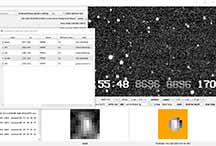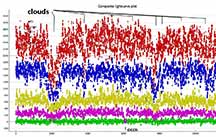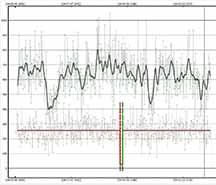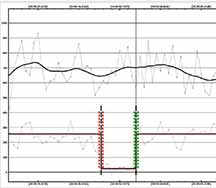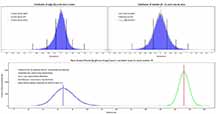The Occultation of a W=13.8 Star by KBO Object 2013 LU28
Mon Mar 17, 2025 at 9:59:52pm
Short condensation of what we know about 2013 LU28 and its unusual orbit and properties: "2013 LU28 is an object with a highly eccentric orbit of e = 0.95, which earned its Scattered Disk Object classification. It has a perihelion of 8.7435 AU and an aphelion of 366.82 AU (JPL Horizons Database). The perihelion is located between the orbits of Jupiter and Saturn, and the aphelion is located far beyond the Kuiper Belt. 2013 LU28 has the longest period among the objects of interest. LU28 is in a retrograde orbit and is thought to have come to its current orbit from the Oort cloud (Barucci et al., 2002; Barkume et al., 2008). Based on spectra from JWST, LU28 is classified as a “Bowl-type” with H2O on the surface (Pinilla-Alonso et al., 2024). It has the smallest diameter (111.4 km) among all of the observed objects listed in Table 1. (Williams and Emergy 2025)
This is a high value event, being a KBO which additionally has a retrograde highly elliptical orbit going between Jupiter, to far beyond the Kuiper Belt into the Oort Cloud. How did it end up out there? Collisions? Resonances? How has this affected its morphology? We don't have confident answers. Fortunately for this particular asteroid, it was recently detected by occultation and so the prediction for its path is going to be more accurate. There are over a dozen observers who've signed up to get a good profile (and moonlet hunt) for this object. It requires a drive to south of King City and and I've chosen sites near Bradley which we've used before. We are going to trust the LuckyStar path for this one, based on RECON astronomer Marc Buie's advice.
Argentina Occultation: Planning page is here.
There is another occultation, of a W=12.2 star, at 8:22pm, by the large asteroid Argentina. It has a 0.8 mag drop and lasts at maximum a very long 18 seconds(!). The path, however, is south of our locations for 2013 LU28, and so will interfere with our prime mission. Still, I set down a site icon anyway. To get inside the path, we'd have to drive to Atascadero, which is too far a drive south from the Bradley area. It may also be of value to record the Argentina event anyway, in case there is a moonlet. Argentina may be at a stationary point in retrograde motion, hence the very long duration. This also makes it a good opportunity to search for moonlets, which may be outside the high rank path. In this way, having Bernard with his two telescopes can be an independent check on any moonlet event. Here's the OWc path it is too far south to actually drive into, deploy for stations from one vehicle, then repack afterwards using 1 vehicle, and then re-deploy 4 sites from one vehicle for what is the far more valuable event. Instead, we can do a 2nd asteroid event much more safely, at 8:31pm.
2000 SJ276 Occultation
This is a good event worth trying, and my plan is to set us all up inside this path. Its planning page is here. I'll then leave Bernard and his big gear collection at this site for the main event 1hr 29min later, and also for the Argentina "moon hunt" 11 minutes before (IF he dares).
Back to 2013 LU28...
Alt=66 in due west 270. That means the altitude will be higher prior to the event. At 9:38pm, 20 min before the event, the altitude of the target is 69 degrees. This is still comfortabley within the 8SE capability w/o hitting the mount base with our standard configuration of f/3.3 and Watec. However, newbies take note - it will require you to push the 8SE OTA as far upward within the dovetail clamp as it is possible to go. Make sure you put the OTA until it won't go any farther. That will be when the male OTA dovetail is actually inside the clamp on the single arm mount, by some millimeters. AS FAR as you can push it! If you don't do this, and then carelessly do a GoTo, your eyepiece or camera will hit the mount base and either cause damage, or else ruin your 2-star alignment and you'll have to start over.
It also conveniently keeps our direction away from the clouds that may still hug the ranges on either side of the Salinas Valley.
Salinas Valley can be windy. Do NOT use the dew shield during the event if it's windy. This event will require long-ish integration to get S/N decent, and wind will make that hard to track for PyMovie. Keep scope capped if necessary to prevent dew'ing, until before the event.
Magnitudes: R=13.37, B=14.4, V=13.97, so W=13.97 - .31(0.43) = 13.8 by Hristo Pavlov's calibrations. r Magnitude=13.92
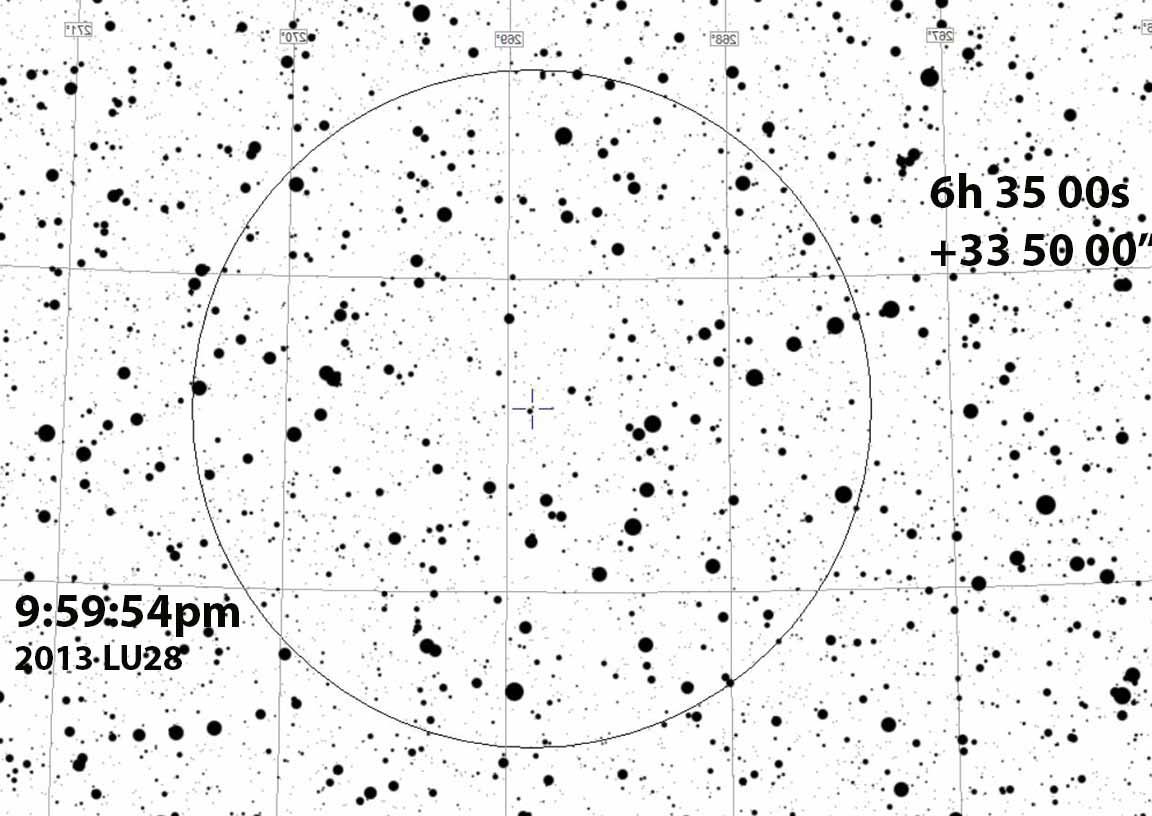
As usual, these charts assume the observer is using the 2" diagonal and Q70 32mm eyepiece for the round circle chart, and is using the Watec 910hx with f/3.3 reducer in 'straight through' orientation and with the RCA video gold BNC connector on the Watec in the 'up' orientation as you look at it from the back. |
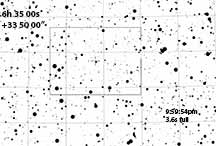 |
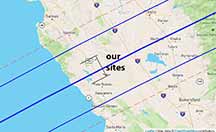
Marc Buie who runs RECON, has said that in his experience the LuckyStar predictions are to be preferred over the OWc's other predictions, as they are individually vetted by people. The LS path is updated regularly. The latest and likely last, is this March 17.0 local time at midnight |
|
|
Sites for us
The procedure: We pack up from the San Lucas event site, leaving Bernard there. I get Kirk and Sandy loaded, we drive south, I get off at Bradley Rd and deploy Sandy at the Bradley Rd site. Then back onto 101 and get off in San Miguel at the 10th Ave exit, right turn (west) for a very short distance to the dirt road access to a ranch, where there is tree and hill protection from north winds. Kirk will be here. I will then get back on 101 and drive south to Monterrey Rd and find the tree on the east side with wide round about for positioning myself. Remember, the target is high, so horizons will not be a problem.
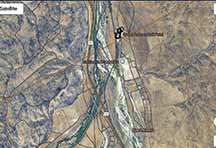
This was Kirk's position on a past event, which has a 8 foot tall railroad equipment box which can provide some wind protection.
However, it is not my first choice any longer, for any of us. I leave it on the planning page but I do not plan to use it. It could be a backup for Sandy if no wind protection as his prime site
|
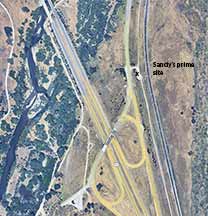
1st to Deploy: Sandy's prime site The site is behind some bushes at the entrance to the dirt road at the base of Bradley Rd at the south end, which is where I set up for an event Sept 14, 2024 after Arecibo. This will give Sandy extra time for set up and testing by putting him here.
In the end, Sandy, Kirk and I all observed from here. |
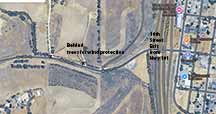
Next deploy is Kirk's site. Exit is 10th Ave at San Miguel. The first of the 'x' marks looks the best from street view. You can get off the road, off the dirt access road, and be behind a hill and a tree. |
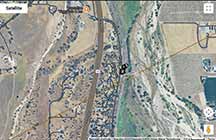
Final site: I'll take this site, furthest south, near San Miguel, on Monterey Rd exit. It's labelled "Richard Nolthenius" on the OWc map.. It's behind a big tree on the east side of the road, but the tree in March may be bare. I have the van as a wind break. The site gets me well off the road and headlights. |
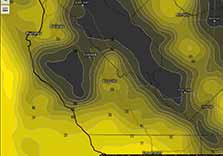
This is the weather prediction as of Monday 2pm using the ECMWF climate model, for 10pm Monday night near event time. It shows typical post-storm pattern; clouds still hugging the high elevations of the Big Sur Mtns and also the Pinnacles range, but in the Salinas Valley middle where we have our sites, it is clear overhead where the target star is. The forecast, however, did worsen by Sunday 11pm, now shown above.
In the end, the prediction was too optimistic. We had mostly clouds and rain, with clear areas that sometimes gave us some data. |
Results:
We had some success amid the rain! I drove Kirk, Sandy, Bernard, and myself to south of San Lucas and to Bradley for these events. Of the 3 events, "The Matrix" had us, as follows
| |
Argentina |
2000SJ276 |
2013LU28 |
| RN |
miss |
solid positive at 8x 0.74s |
solid 5.48s positive at 32x |
| KB |
miss |
Could not ID field after Argentina |
solid 5.47s positive at 8x |
| BH |
solid miss |
rained out |
rained out |
| SA |
rained out |
rained out |
power failure |
Bernard Huynh
Stayed at his San Lucas station at Krushwerks winery entrance, to anchor the northern side of the LS predicted path. Alas, rain and clouds ruined his two telescope set ups. No data
Sandy Astone
I decided we only had time to set up at one site, our first; set for Sandy. In order to avoid correlation between our sites, I thought it best to be a few dozen feet apart. Also, to help each find a spot protected from the breeze out of the northwest. Sandy set up behind a large bush. It turned out that the power cable from the battery did not power the scope. Afterward, we decided it was probably a Meade sized barrel plug, not Celestron. They make only intermittant contact, and tonight wasn't the night for it to work. Sandy asked for a new battery, but I did not have a spare and time was very very short now, so he want back to his station and ended up with no data.
Richard Nolthenius
The target was predicted to be 14.0 magnitude, so I assumed I'd need 16x or 32x. I put it on 32x just to be sure I could ID the field. The focus turned out to not be perfect, and the star was easily visible at 32x and for a 5s event, I figured that might be enough and I just left it at 32x. In hindsight, I wish I'd been able to spend more time focusing and trying shorter exposures, but I was anxious to begin recording early so that any moonlets might be seen. With only me and Kirk now to get data, I wanted to be backup if Kirk saw anything unusual too. Plenty bright, for the 32x, bright cresents for each star. I watched intently during the event analysis in PyMovie and the target mask did not jump over to the nearby brighter star at any point. I initially tried to do a TME mask to capture the crescent shape of my out of focus stars, but that requires a 21 px minimum aperture box, which would then include the nearby brighter star, so I could not do that; instead I used static circular masks and cut the aperture box to 11 px to exclude the nearby brighter star.
Long 120 45 13.24
Lat 35 49 03.63
Elev 177m
Just off southern end of Bradley Rd, on dirt road parallel with entrance from paved Bradley Rd. Near Kirk and Sandy.
04:55:49 UT start
05:03:21 UT end
magDrop report: percentDrop: 90.5 magDrop: 2.553 +/- 0.635 (0.95 ci)
DNR: 3.83
D time: [04:59:49.4981]
D: 0.6800 containment intervals: {+/- 0.1217} seconds
D: 0.9500 containment intervals: {+/- 0.2930} seconds
D: 0.9973 containment intervals: {+/- 0.5931} seconds
R time: [04:59:54.9776]
R: 0.6800 containment intervals: {+/- 0.1217} seconds
R: 0.9500 containment intervals: {+/- 0.2930} seconds
R: 0.9973 containment intervals: {+/- 0.5931} seconds
Duration (R - D): 5.4795 seconds
Duration: 0.6800 containment intervals: {+/- 0.1708} seconds
Duration: 0.9500 containment intervals: {+/- 0.3860} seconds
Duration: 0.9973 containment intervals: {+/- 0.7025} seconds
Not yet reported, and must also report to LuckyStar
Kirk Bender
Set up behind another bush about 50 ft from Sandy and 100 ft from me, and at 8x got good data identical to my (RN) own but slightly better accuracies on D and R timings, as expected with his shorter integration. Identical duration of 5.475 seconds +- .003 s.
I got a 5.5 sec event for the 2013 LU28 Centaur, from Camp Roberts, 8x.
Seems to agree with what the other stations reported, I was (we were) about -10km from center, not the 12.7 chord I registered in OW cloud before the event.
I collapsed the legs and put the scope low against the bush to guard from breeze, I got a little shake but not much.
There's somewhat of a rise, a peak in the middle of the event, see the zoom images. But probably just noise.
I used 21 size apertures and 2.4 size static masks in PyMovie
I ran PyMovie again on it and watched target aperture closely, it didn't jump to nearby bright star during the event as far as I could tell.
magDrop report: percentDrop: 86.2 magDrop: 2.153 +/- 0.593 (0.95 ci)
DNR: 2.13
D time: [04:59:48.8875]
D: 0.6800 containment intervals: {+/- 0.0618} seconds
D: 0.9500 containment intervals: {+/- 0.2047} seconds
D: 0.9973 containment intervals: {+/- 0.4949} seconds
R time: [04:59:54.3595]
R: 0.6800 containment intervals: {+/- 0.0618} seconds
R: 0.9500 containment intervals: {+/- 0.2047} seconds
R: 0.9973 containment intervals: {+/- 0.4949} seconds
Duration (R - D): 5.4720 seconds
Duration: 0.6800 containment intervals: {+/- 0.1004} seconds
Duration: 0.9500 containment intervals: {+/- 0.2704} seconds
Duration: 0.9973 containment intervals: {+/- 0.5789} seconds








